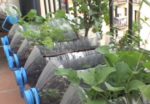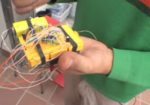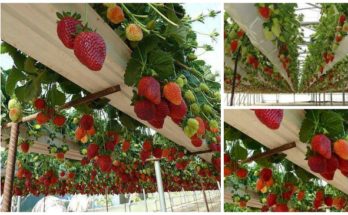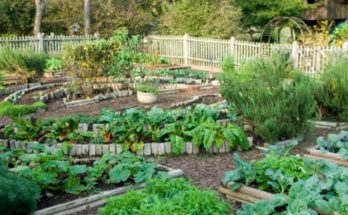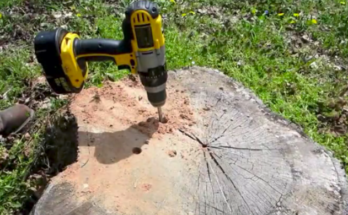Gardens can water themselves. Who knew? Sound too good to be true? Keep reading and see just how inexpensive and easy this method is for growing all your favorite veggies. Though the garden takes some work to set up, once that’s done it’s basically hands-free and you’ll only need to weed and pick produce. One of the many benefits to having a self-watering garden is that no matter the weather, the plants will get watered, even if you go on vacation and forget to have someone drop by for a watering session, even if it’s over 100 degrees outside and you don’t want to risk heat stroke but worry about losing your crops, and even if you have an emergency and have to leave in a hurry before the day’s watering normally takes place.
Another additional perk is that for a lot of the DIY self-watering gardens, they’re built so that not only will water be constantly accessible to your fruits and vegetables, they will be out of reach from pesky critters who want to partake of your food. This is especially helpful if you’re in an area that has a lot of small wildlife, such as squirrels, rabbits, voles, birds, and deer, or even have pets or farm animals nearby. The enclosures will prevent digging from neighborhood cats and dogs, as well preventing curious goats, cows, sheep, and rabbits from sampling your produce.
My dad is looking to move to a place where he can have a small vegetable garden (we had a couple gardens while I was growing up, and I loved being able to pick a cucumber, some carrots, or broccoli for dinner), but since he’s getting older he’ll need some special containers so that he doesn’t hurt his back or knees. That’s an added bonus to the self-watering garden, since most of the containers (even storebought) can be raised to prevent strained muscles. Since the raised containers or beds also have whatever soil you choose in them, weeding will be a shorter task, another benefit for those who would like the addition of fresh veggies to their table but aren’t always able to spend a lot of time gardening.
If you’re into recycling instead of purchasing all the equipment for the project, you can utilize everything from soda bottles to large juice containers to plastic buckets. They may not look as pretty (although you can of course surround them with brick, stone, or wood), but they do help the environment and will still do a great job at providing nourishment for the plants (while not taking up space in the local landfill). If you’d rather purchase something made for this type of job, however, there are quite a few options.
If you want to check out how to make your own self-watering garden for this spring and summer, you can check out these two videos on YouTube, or these tutorials from The Family Handy Man, Balcony Garden Web, Tree Hugger, or Sustainability by Nature. Happy planting!


